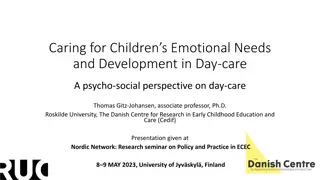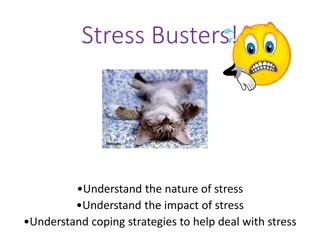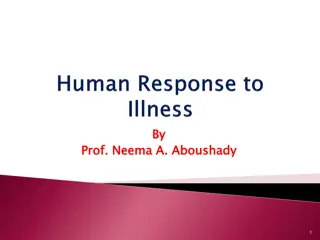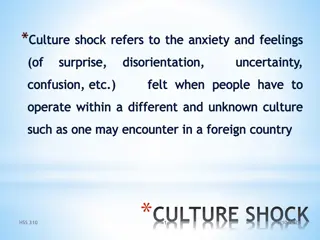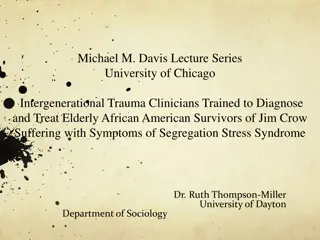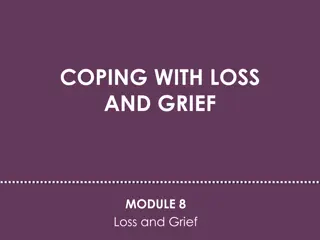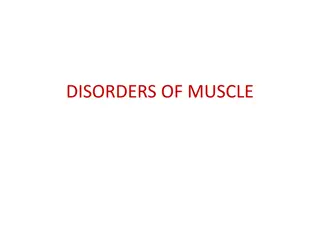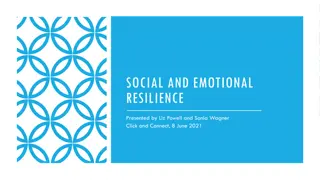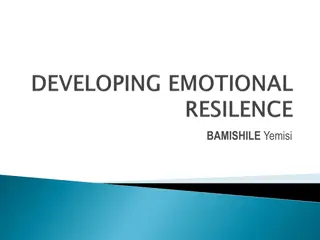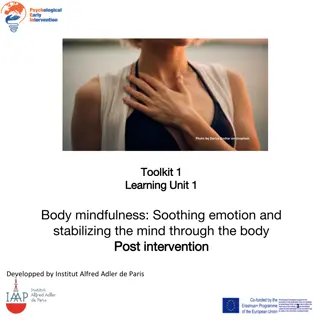Coping with Emotional Challenges of Living with Myositis
Factors contributing to depression in myositis patients include physical limitations, insecurity in medical care, and impact on relationships and education/career. Strategies for coping include self-advocacy, communication, adapting to changes, and promoting kindness and compassion towards oneself and others.
Download Presentation

Please find below an Image/Link to download the presentation.
The content on the website is provided AS IS for your information and personal use only. It may not be sold, licensed, or shared on other websites without obtaining consent from the author. Download presentation by click this link. If you encounter any issues during the download, it is possible that the publisher has removed the file from their server.
E N D
Presentation Transcript
Living with Myositis: Emotional Challenges and Strategies for Coping Suzan Fischbein, LCSW Senior Social Work Coordinator, Myositis Support Group Hospital for Special Surgery New York, New York
Some factors that may increase the chances of experiencing depression in myositis Research shows that people with chronic illness are two to three times as likely to have depression as those without a chronic illness www.ncbi.nlm.nih.gov/pmc/articles/PMC3181964/ Having a chronic illness, can cause feelings of helplessness, hopelessness, isolation, fatigue and the inability to do things that once brought you pleasure. There can be a sense of loss of control over one s life. These are the same feelings that can cause depression. These are some of the factors that may contribute to depression and the impact they may for people with myositis: 2
Contributing factors and their impact Physical limitations - Pain, reduced range of motion, weakness, fatigue, medication side effects - Can lead to less physical ability, feeling more alone and isolated and less able to do things - Fear of falling - Difficulty swallowing - Myositis is rareand considered an invisible illness : You don t looksick ! Insecurity of medical care: finding doctors who understand and treat people with myositis. Communication among your doctors may be poor. - - 3
Contributing factors and their impact (cont d) Relationships - Partner intimacy may be affected (emotional and physical factors) Who am I now? - Role in family - Planning activities may be challenging. Can affect relationships with friends and others 4
Contributing factors and their impact (cont d) Education/Career - Higher education decisions and issues that may impact this - Career choices - Current employment: possible issues of access, ability to meet employment responsibilities, how much to reveal to employer? 5
Some things that you can do for yourself Try to remember that myositis does not have to define who you are. Though your life has been changed since diagnosis, who are you as a person? What are your values, your beliefs? Speak to those you trust about how you are feeling: communicate Work toward adapting/accepting changes as they occur Look for ways to problem solve Try to avoid all-or-nothing thinking (catastrophizing) Empower yourself through self-advocacy, acceptance, helping others Kindness and compassion (for yourself and others) Religious/spiritual affiliation 6
Some things you can do for yourself (cont d) Support Groups (TMA) live and online access Mindfulness: meditation, gentle yoga, chair yoga* Any type of movement* *Consult first with your doctor 7
When outside help is needed: There IS Help Depression is treatable https://www.nimh.nih.gov/health/publications/chronic-illness-mental- health/index.shtml In an emotional crisis, go to your nearest emergency room Speak with your doctor or healthcare professionals Social service agencies, community mental health centers Consider psychotherapy with a licensed clinical professional Consult with a psychiatrist regarding antidepressant medication Religious/spiritual Please refer to recommendations made by my fellow panelists as well 8
Understanding the concerns of our care partners Why care partner vs. caregiver? Care partners face their own issues and concerns about the challenges that may arise Important to remember that where one is in the life cycle may apply here Examples some of the concerns of our care partners: 9
Some concerns I worry about finances. How long will my partner be able to work? Will we be able to manage? Sometimes I feel I have no right to complain or consider my own mental health needs when my partner is suffering. I also have health issues, and I wonder how long I ll be able to help my partner in the way that is needed. Sometimes I feel so exhausted myself, and I worry that I might burn out. 10
Some coping strategies for care partners Normal to grieve the loss of the relationship you once knew. Acknowledge feelings and maintain ongoing communication (outside help with a professional may be needed) Take time for yourself to do activities you enjoy Find work-arounds : How can we get this done? Do enjoyable activities together 11
Some coping strategies for care partners (cont d) Plan for the future Gather supports Therapy/counselling Be realistic about what you can and cannot do 12
Some relevant readings https://www.hss.edu/conditions_managing-your-medical-team.asp https://www.hss.edu/conditions_when-myositis-knocks-on-your-door.asp https://www.hss.edu/conditions_who-am-i-now-living-with-autoimmune- disease.asp https://www.hss.edu/conditions_preparing-for-travel-with-chronic-illness.asp https://www.nytimes.com/2019/07/10/smarter-living/disclose-disability- work-employer-rights.html https://reader.mediawiremobile.com/epmagazine/issues/205155/viewer?pag e=47 13
Citations www.ncbi.nlm.nih.gov/pmc/articles/PMC3181964/ https://www.nimh.nih.gov/health/publications/chronic-illness-mental- health/index.shtml 14
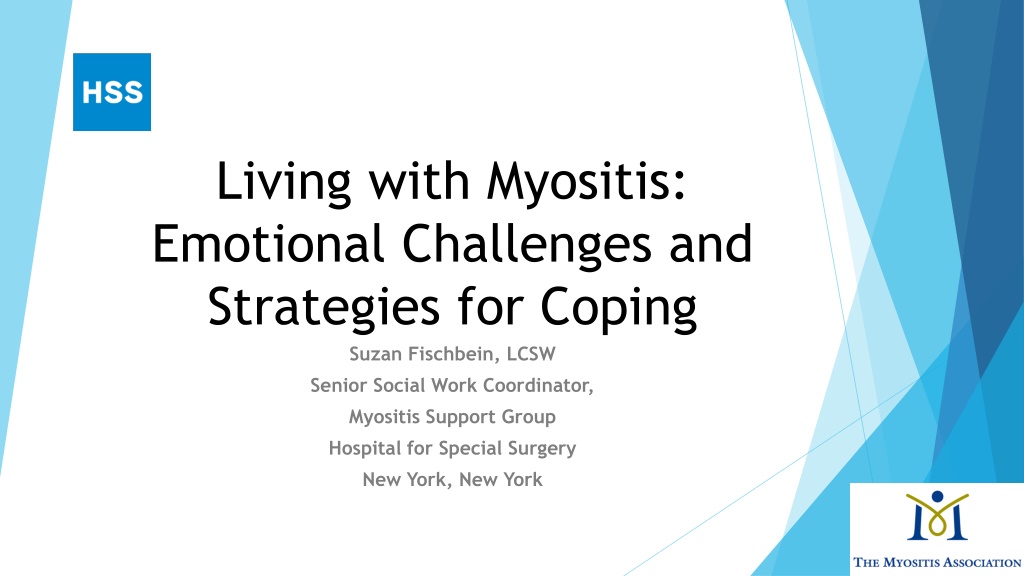
 undefined
undefined







